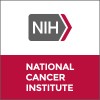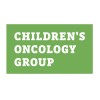
Validation of a Treatment Algorithm for Poor-Risk NSGCTnon Seminomatous Germ-cell Tumors
Non-Seminomatous Germ Cell TumorThis is a prospective multicenter, non-randomized research program that includes: a phase IV study (for all patients) with a collection of tissue specimens of tumor, a phase II study (for patients with primary mediastinal tumors and an unfavorable decline in tumor markers), and a diagnostic study (for all patients, except patients with brain metastases at baseline or patients for whom any brain MRI is contra-indicated). The main question it aims to answer is improving outcome for young adults with poor-prognosis Non Seminomatous Germ Cell Tumor (NSGCT) is to validate prospectively the efficacy and safety of a personalized treatment based on early tumor marker kinetic assessment in real life for patients with poor-prognosis NSGCT. Participants will be followed-up according to the assessment of decline kinetics of the tumor markers at the end of a first chemotherapy cycle and according to the localisation of the primary lesion if unfavorable. In the case of a patient with a favorable decline of the tumor markers, he will be treated by 3 additional standard chemotherapy cycles. In the case of a patient with a testicular or peritoneal primary tumor and an unfavorable decline of the tumor markers, the patient will be treated by a dose-dense standard therapy. The patient with a mediastinal primary tumor and an unfavorable decline of the tumor markers will be proposed to enter the phase II part of the study or to enter the dose-dense regimen like the other primary localisations. If the patient consents and is eligible for phase II part, he will undergo either an early surgery if feasible or a high-dose chemotherapy if the early surgery is not possible.

HeadStart4: Newly Diagnosed Children (<10 y/o) With Medulloblastoma and Other CNS Embryonal Tumors...
MedulloblastomaCentral Nervous System Embryonal TumorsThis is a prospective randomized clinical trial, to determine whether dose-intensive tandem Consolidation, in a randomized comparison with single cycle Consolidation, provides an event-free survival (EFS) and overall survival (OS). The study population will be high-risk patients (non-Wnt and non-Shh sub-groups) with medulloblastoma, and for all patients with central nervous system (CNS) embryonal tumors completing "Head Start 4" Induction. This study will further determine whether the additional labor intensity (duration of hospitalizations and short-term and long-term morbidities) associated with the tandem treatment is justified by the improvement in outcome. It is expected that the tandem (3 cycles) Consolidation regimen will produce a superior outcome compared to the single cycle Consolidation, given the substantially higher dose intensity of the tandem regimen, without significant addition of either short-term or long-term morbidities.

Targeted Therapy Directed by Genetic Testing in Treating Pediatric Patients With Relapsed or Refractory...
Advanced Malignant Solid NeoplasmAnn Arbor Stage III Non-Hodgkin Lymphoma43 moreThis Pediatric MATCH screening and multi-sub-study phase II trial studies how well treatment that is directed by genetic testing works in pediatric patients with solid tumors, non-Hodgkin lymphomas, or histiocytic disorders that have progressed following at least one line of standard systemic therapy and/or for which no standard treatment exists that has been shown to prolong survival. Genetic tests look at the unique genetic material (genes) of patients' tumor cells. Patients with genetic changes or abnormalities (mutations) may benefit more from treatment which targets their tumor's particular genetic mutation, and may help doctors plan better treatment for patients with solid tumors or non-Hodgkin lymphomas.

Thromboprophylaxis in Good and Intermediate Prognosis Advanced Germ Cell Tumors
Germ Cell TumorThe goal of this clinical trial is to assess the efficacy of thromboprophylaxis in preventing venous thromboembolic events (VTE) in good and intermediate prognosis patients with metastatic germ cell cancer (GCT) undergoing first-line cisplatin-based chemotherapy with risk factors for developing a thromboembolic event . The high-risk patients will be randomized between two treatments arm (receiving a thromboprophylaxis in the experimental arm, or no thromboprophylaxis in the control arm). The low-risk patients will be observed without any thromboprophylaxis. Patients will participate in the study for 14-17 weeks depending on the planned number of cycles of chemotherapy. Researchers will compare an experimental arm with thromboprophylaxis and a control arm without thromboprophylaxis to detect an absolute decrease of 12% of the proportion of patients having experienced a VTE, from 21% (high risk patients, control arm) to 9% (high risk patients, experimental arm).

Chemotherapy Followed by Radiation Therapy in Treating Younger Patients With Newly Diagnosed Localized...
Central Nervous System Nongerminomatous Germ Cell TumorChildhood Central Nervous System GerminomaThis phase II trial studies how well chemotherapy followed by radiation therapy work in treating younger patients with newly diagnosed central nervous system germ cell tumors that have not spread to other parts of the brain, spinal canal, or body (localized). Drugs used as chemotherapy, such as carboplatin, etoposide, and ifosfamide, work in different ways to stop the growth of tumor cells, either by killing the cells, by stopping them from dividing, or by stopping them from spreading. Radiation therapy uses high-energy x rays to kill tumor cells. Giving chemotherapy followed by radiation therapy may kill more tumor cells.

Palbociclib in Treating Patients With Relapsed or Refractory Rb Positive Advanced Solid Tumors,...
Advanced Malignant Solid NeoplasmRecurrent Childhood Ependymoma30 moreThis phase II Pediatric MATCH trial studies how well palbociclib works in treating patients with Rb positive solid tumors, non-Hodgkin lymphoma, or histiocytic disorders with activating alterations (mutations) in cell cycle genes that have spread to other places in the body and have come back or do not respond to treatment. Palbociclib may stop the growth of cancer cells by blocking some of the proteins needed for cell growth.

Secured Access to Pembrolizumab for Patients With Selected Rare Cancer Types
SarcomaOvarian Neoplasm7 moreThis is a Phase 2, non-randomised, open-label, multicentric study to investigate the efficacy and safety of pembrolizumab monotherapy in 7 cohorts of patients with specific rare cancers who have unresectable locally advanced or metastatic disease, which is resistant or refractory to standard therapy, or for which standard therapy does not exist, or is not considered appropriate, and for which no other experimental treatment options are available, in order to identify subsets of patients that may benefit from treatment

SJDAWN: St. Jude Children's Research Hospital Phase 1 Study Evaluating Molecularly-Driven Doublet...
Anaplastic AstrocytomaAnaplastic Ependymoma83 moreApproximately 90% of children with malignant brain tumors that have recurred or relapsed after receiving conventional therapy will die of disease. Despite this terrible and frustrating outcome, continued treatment of this population remains fundamental to improving cure rates. Studying this relapsed population will help unearth clues to why conventional therapy fails and how cancers continue to resist modern advances. Moreover, improvements in the treatment of this relapsed population will lead to improvements in upfront therapy and reduce the chance of relapse for all. Novel therapy and, more importantly, novel approaches are sorely needed. This trial proposes a new approach that evaluates rational combination therapies of novel agents based on tumor type and molecular characteristics of these diseases. The investigators hypothesize that the use of two predictably active drugs (a doublet) will increase the chance of clinical efficacy. The purpose of this trial is to perform a limited dose escalation study of multiple doublets to evaluate the safety and tolerability of these combinations followed by a small expansion cohort to detect preliminary efficacy. In addition, a more extensive and robust molecular analysis of all the participant samples will be performed as part of the trial such that we can refine the molecular classification and better inform on potential response to therapy. In this manner the tolerability of combinations can be evaluated on a small but relevant population and the chance of detecting antitumor activity is potentially increased. Furthermore, the goal of the complementary molecular characterization will be to eventually match the therapy with better predictive biomarkers. PRIMARY OBJECTIVES: To determine the safety and tolerability and estimate the maximum tolerated dose/recommended phase 2 dose (MTD/RP2D) of combination treatment by stratum. To characterize the pharmacokinetics of combination treatment by stratum. SECONDARY OBJECTIVE: To estimate the rate and duration of objective response and progression free survival (PFS) by stratum.

Vaccine Therapy With Sargramostim (GM-CSF) in Treating Patients With Her-2 Positive Stage III-IV...
HER2-positive Breast CancerStage III Ovarian Epithelial Cancer7 moreRATIONALE: Vaccines may help the body build an effective immune response to kill tumor cells. Colony-stimulating factors, such as GM-CSF, may increase the number of immune cells found in bone marrow or peripheral blood. Giving vaccine therapy together with sargramostim may be an effective treatment for breast cancer and ovarian cancer. PURPOSE: This phase I trial is studying the side effects and identifying the best dose of vaccine therapy when given together with sargramostim in treating patients with stage III-IV breast cancer or ovarian cancer.

Busulfan, Melphalan, Topotecan Hydrochloride, and a Stem Cell Transplant in Treating Patients With...
Solid TumorAdult Central Nervous System Germ Cell Tumor30 moreRATIONALE: Giving high-dose chemotherapy before an autologous stem cell transplant stops the growth of tumor cells by stopping them from dividing or killing them. Giving colony-stimulating factors, such as G-CSF, helps stem cells move from the bone marrow to the blood so they can be collected and stored. Chemotherapy is then given to prepare the bone marrow for the stem cell transplant. The stem cells are then returned to the patient to replace the blood-forming cells that were destroyed by the chemotherapy. PURPOSE: This clinical trial is studying how well giving busulfan, melphalan, and topotecan hydrochloride together with a stem cell transplant works in treating patients with newly diagnosed or relapsed solid tumor.
